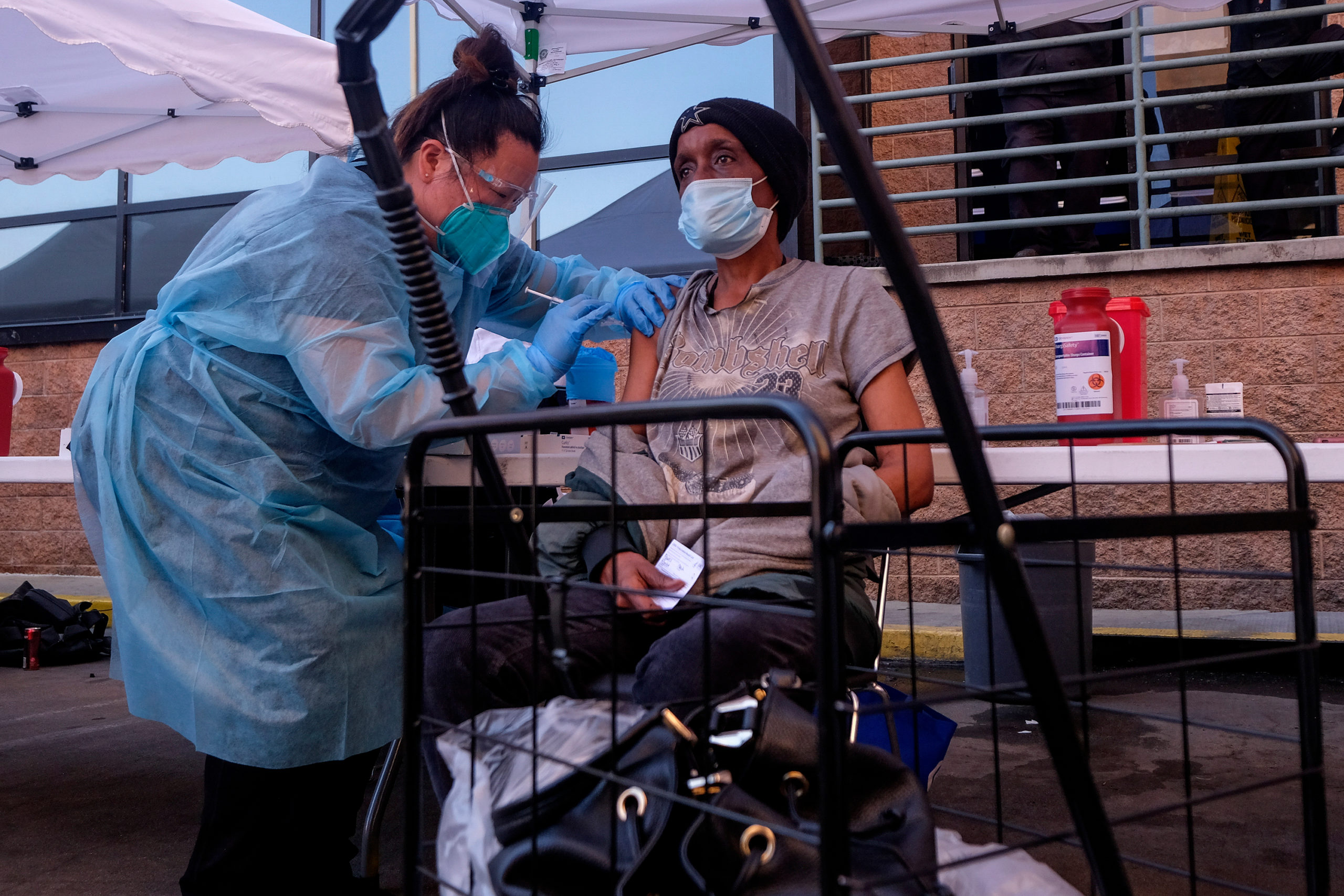The CDC believes that Omicron will spread more easily than the previous variant and recommends that everyone get vaccinations and booster shots. Although many communities are seeing reductions in cases, hospitalizations, or deaths, these outcomes are not being experienced in all communities or among all people within each community. Still, we need to address the emerging implications on vaccination for people experiencing homelessness during this wave of the pandemic. This post will address three of these implications: emerging guidance, new research on vaccinating people experiencing homelessness, and the latest statistics on racial disparities in vaccination.
CDC Recommendations and Guidance
Getting vaccinated remains the most effective measure to prevent infection. While fully vaccinated people will still experience breakthrough infections, studies show that people who received their booster shots had a stronger immune response. Therefore, they are less likely to experience severe illness, hospitalization, or death.
People should get any available vaccine as they all provide increased protection against COVID-19. This is especially important for people experiencing homelessness, who are often more vulnerable to the impacts of COVID-19.
When vaccines were first released to the public, Johnson & Johnson vaccines were initially seen as the preferred option for people experiencing homelessness due to the ease of administering one dose; this approach was convenient and effective in vaccinating hard-to-reach populations. However, the CDC recommends that people who received a Johnson & Johnson vaccine get a Pfizer or Moderna booster shot. If your community vaccinated people experiencing homelessness with the Johnson & Johnson vaccine, please continue to encourage vaccination and booster shots to ensure protection against COVID-19.
Along with vaccination rollout strategies, communities should also encourage regular testing in their shelters and facilities to prevent COVID-19 spread.
Research on Increasing Vaccination Rates Among People Experiencing Homelessness
People experiencing homelessness may face a multitude of barriers to getting vaccinated. Challenges can range from inability to stay in one place for a long time to medical stigma against homelessness.
The Alliance’s Actionable Research on COVID-19 and Homelessness webinar discusses research and potential solutions to vaccination access. It includes information about a 2021 study conducted by the Benioff Homeless and Housing Initiative (BHHI). Researchers found that mobile vaccinations sites could significantly increase vaccination rates among people experiencing homelessness.
While the findings are limited to a specific community, it signifies that people experiencing homelessness are interested and will utilize vaccination and testing services. However, efforts are needed to make these services more accessible.
The BHHI study recommended the following strategies to improve accessibility:
- Partnering with members of communities such as community health outreach workers to build trust
- Training outreach workers to be well-informed and provide consistent messaging
- Providing transparent and plentiful data around vaccine effectiveness, symptoms, and safety to build credibility
Racial and Ethnic Disparities Around Vaccination Access
Existing research suggests that the racial and ethnic disparities evident within homelessness are mirrored in health care access and risk of exposure and infection of COVID-19. Thus, vaccination rollouts for people experiencing homelessness must consider proactive strategies to ensure that certain racial or ethnic groups are not falling behind on vaccinations.
Looking at Kaiser’s analysis of national vaccination rates from January 2021 to January 2022, Whites and Hispanics (60% each) generally had higher vaccination rates than Blacks (54%) in 42 states. Asians had the highest overall vaccination rates at 81%.
While Hispanics and Asians had excellent vaccination outcomes compared to the rest of the population, the research does not include racial and ethnic subpopulations. Good overall numbers may be masking the existence of subpopulations with less access or take-up of vaccinations.
Since there is no accurate data tracking for the vaccination rates among people experiencing homelessness, it is not possible to make a comparison to the national rates and assume the same successful vaccination outcomes.
However, the National Health Care for the Homeless Coalition’s (NHCHC) COVID-19 Dashboard provides reported vaccination numbers from Health Care for the Homeless programs. Still, these likely underestimate the correct number of vaccinations, as only a portion of health care centers participated in the data collection.
More information is needed to know whether historically marginalized people in this subpopulation are getting vaccinated at equitable rates. The homeless services field needs to continue developing and reevaluating strategies to improve vaccine access to ensure everyone can protect themselves against COVID-19.
Fortunately, the data provides insight that Health Care for the Homeless programs can help bridge vaccine access to people of color. According to NHCHC’s data, Blacks and American Indian/Alaskan Natives each make up 17.8% of vaccinated patients from these health centers. These numbers are larger than their share of the general U.S. population (12.4% and 0.8% respectively).
Alliance Resources
To learn more about effective COVID-19 response strategies, the Alliance provides guidance through its COVID-19 Online Learning Series.

